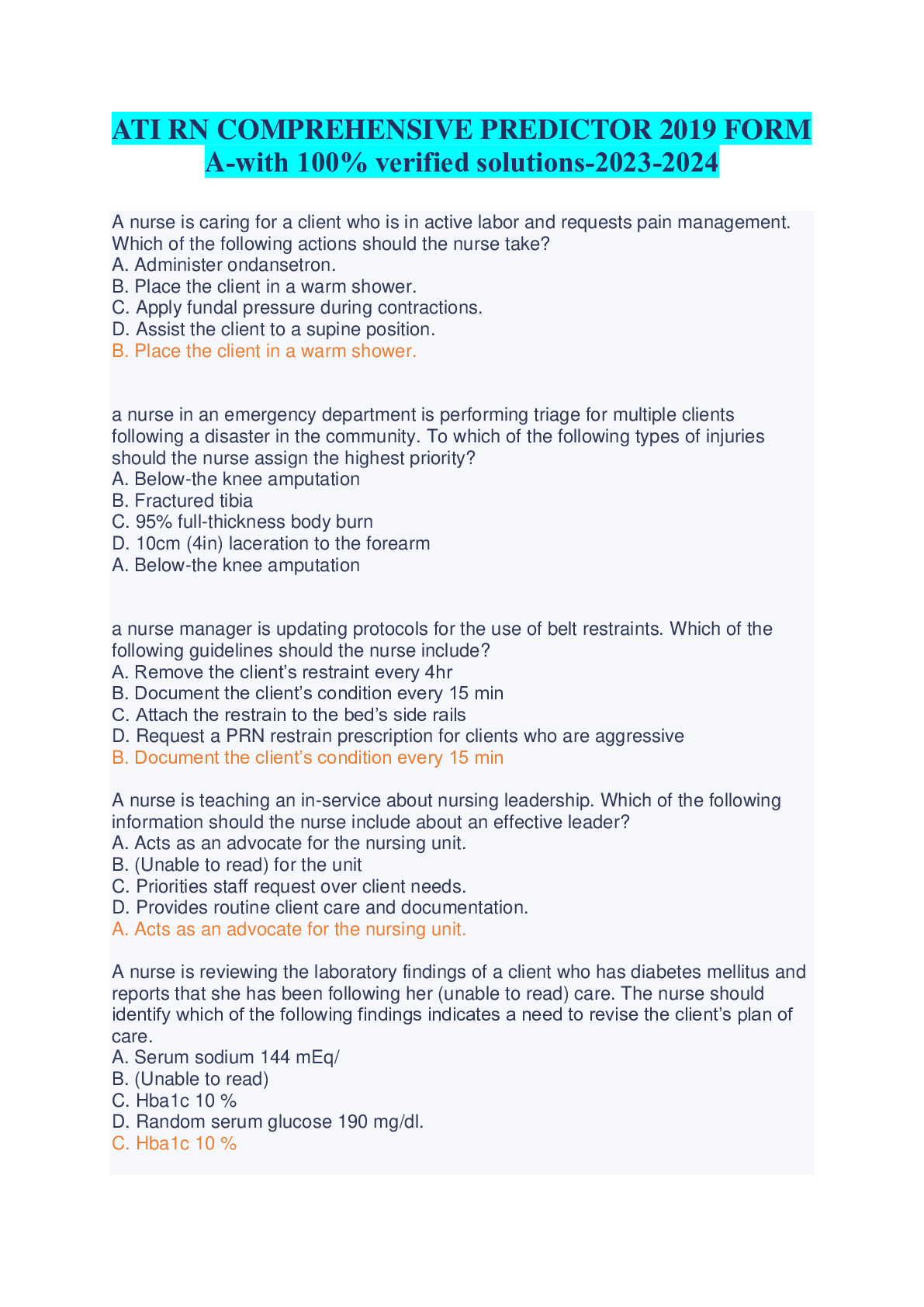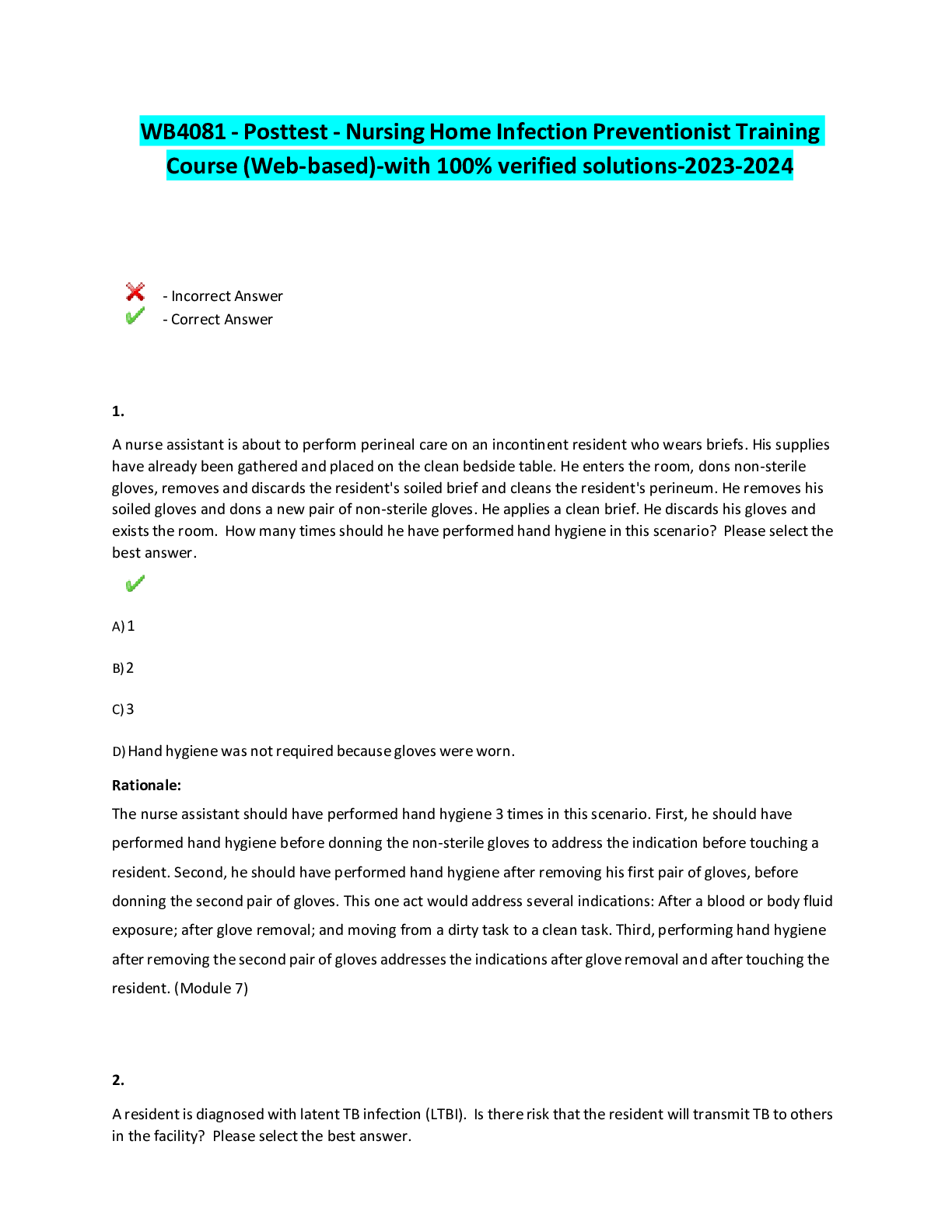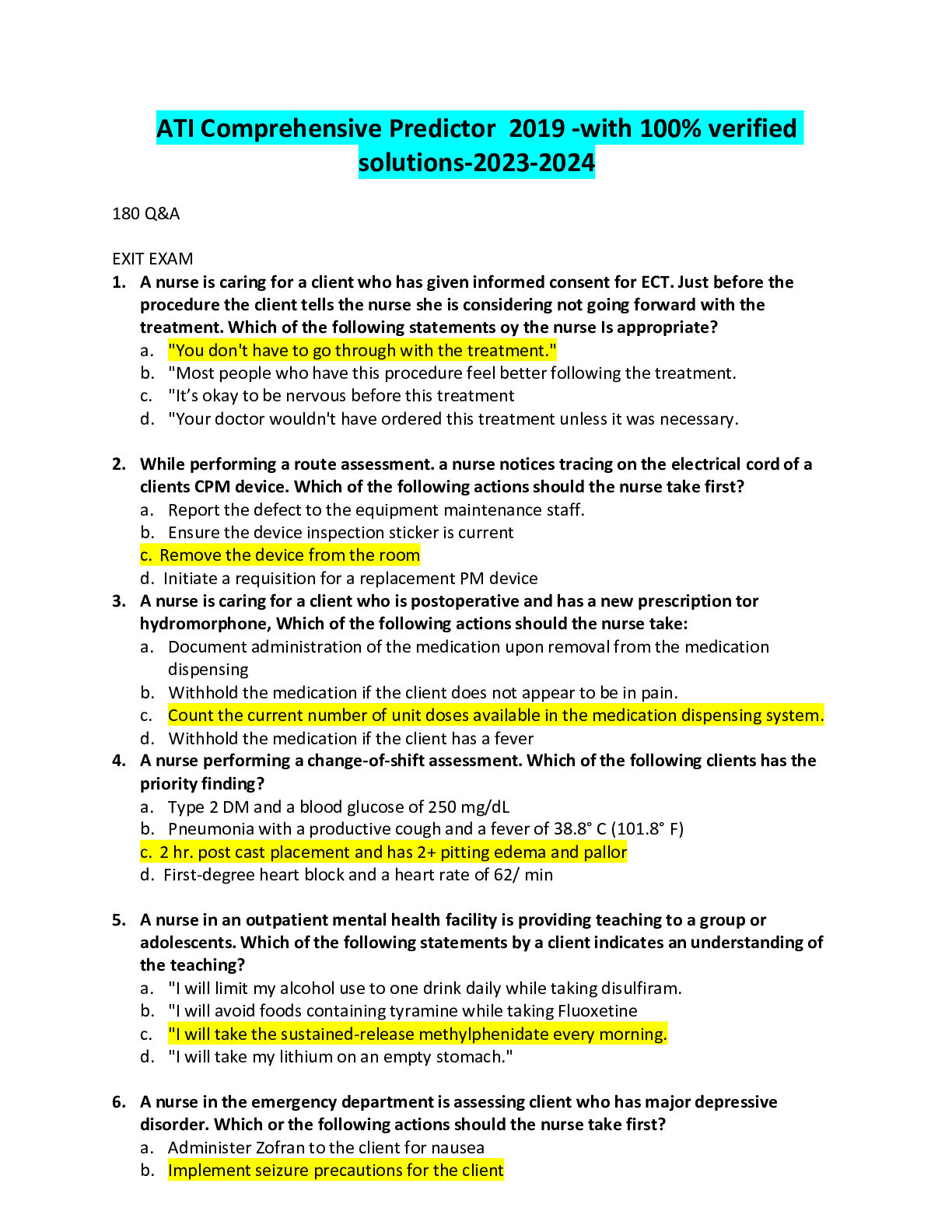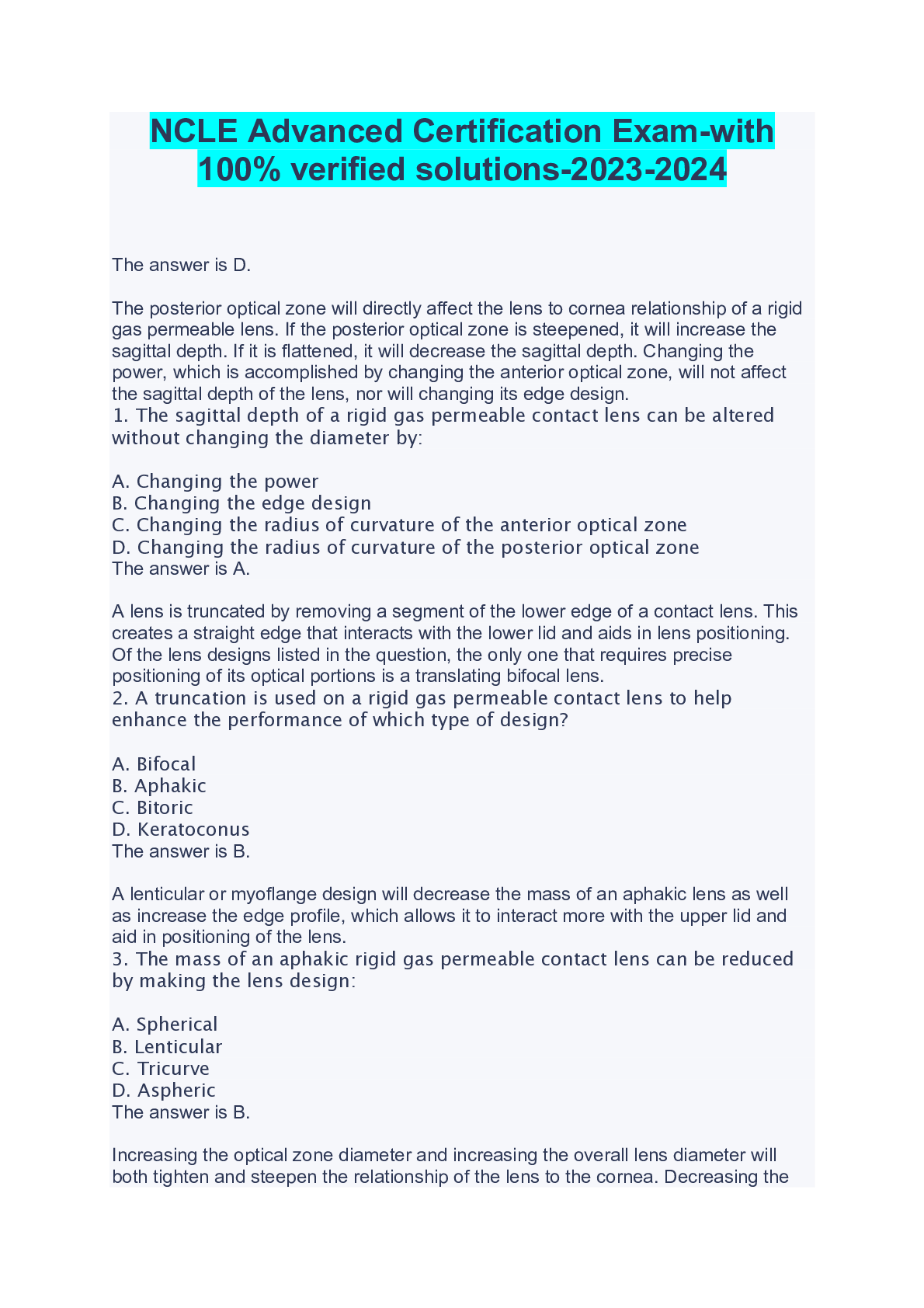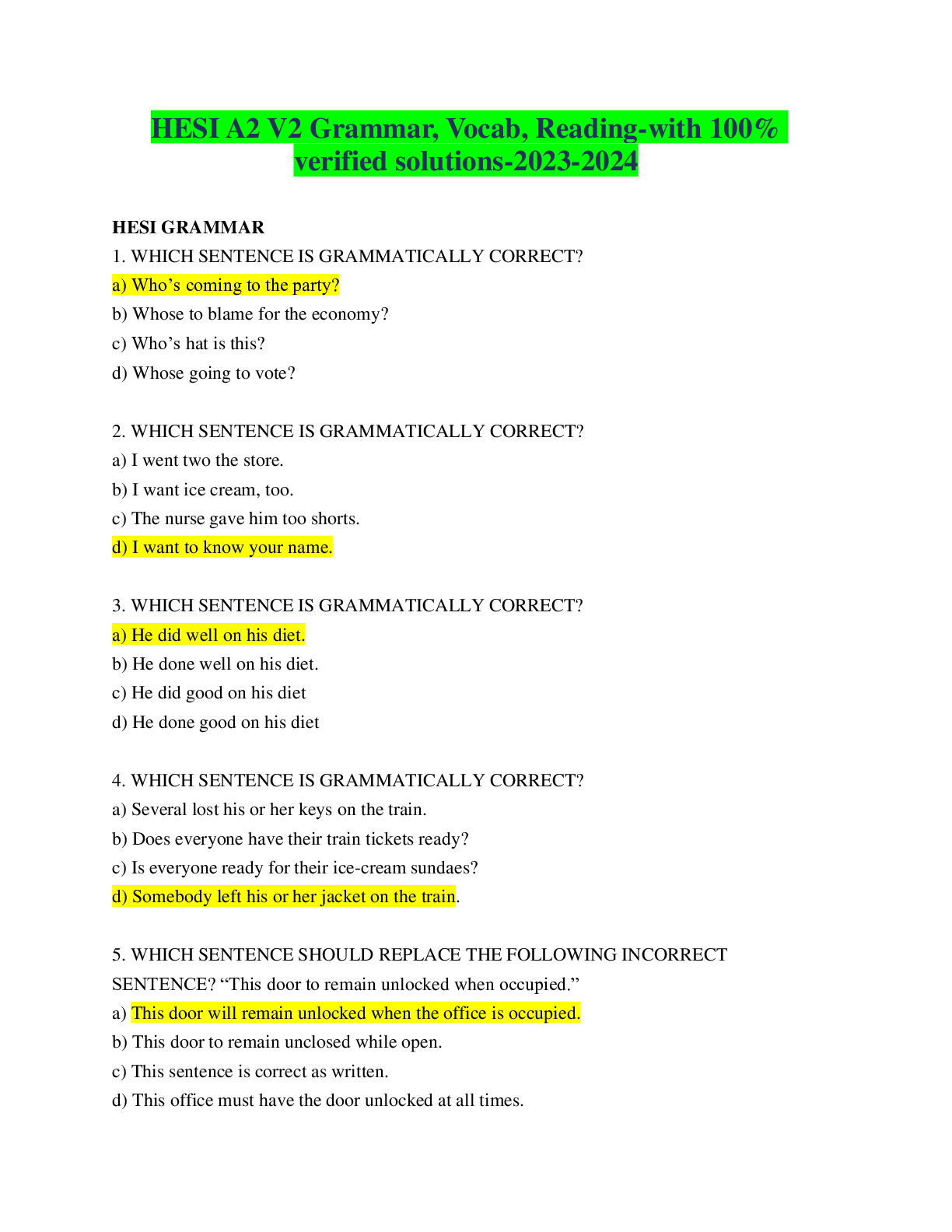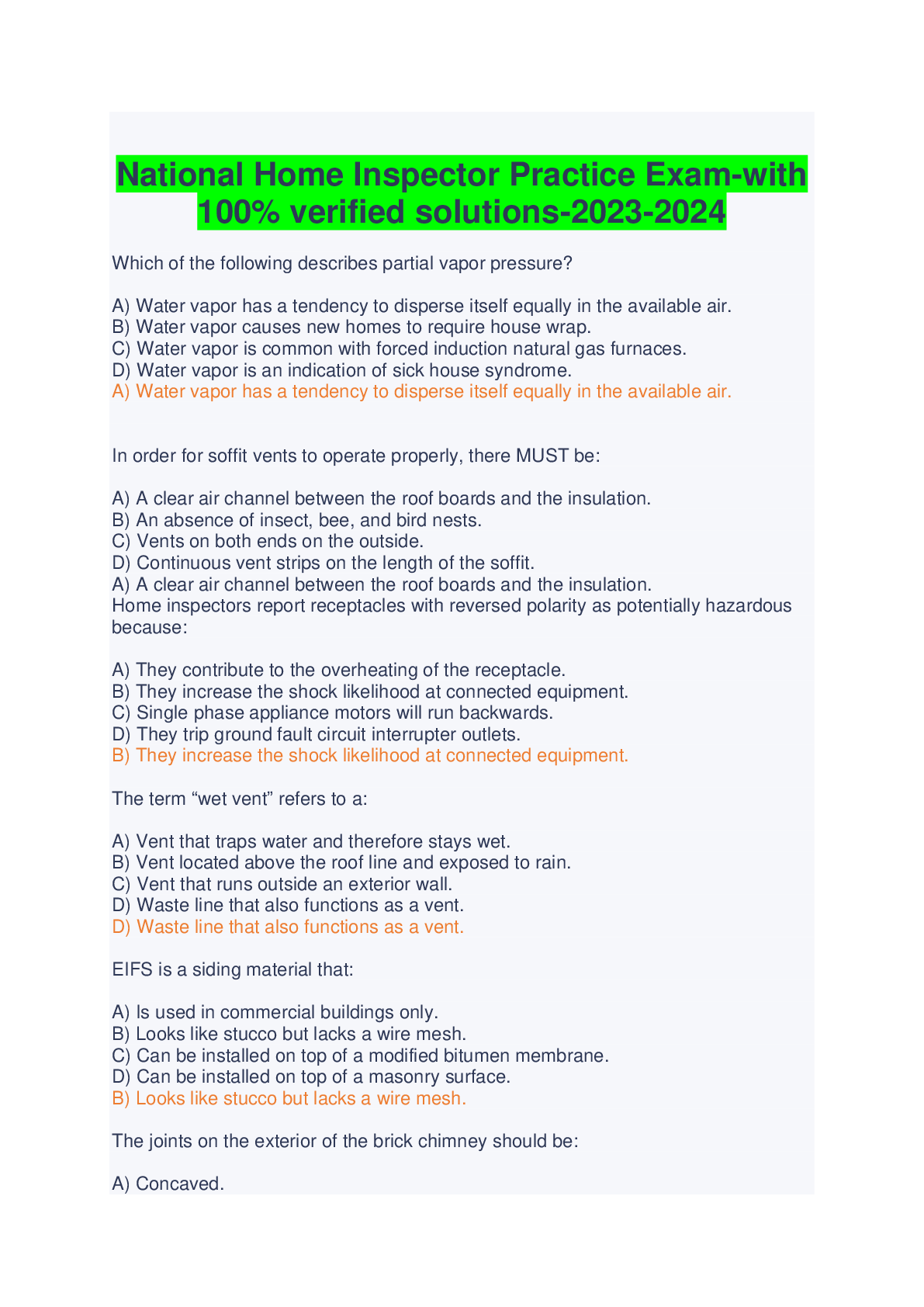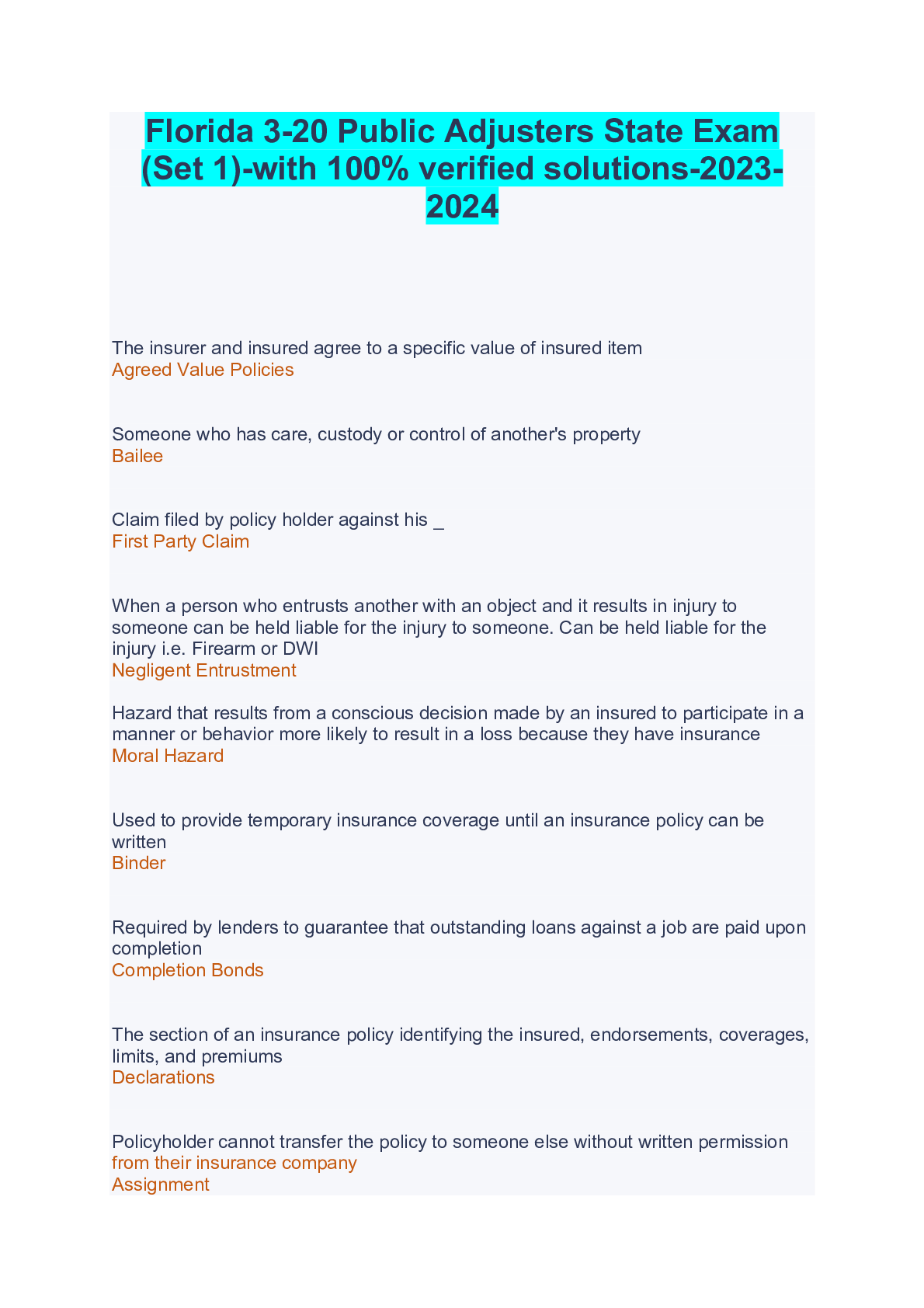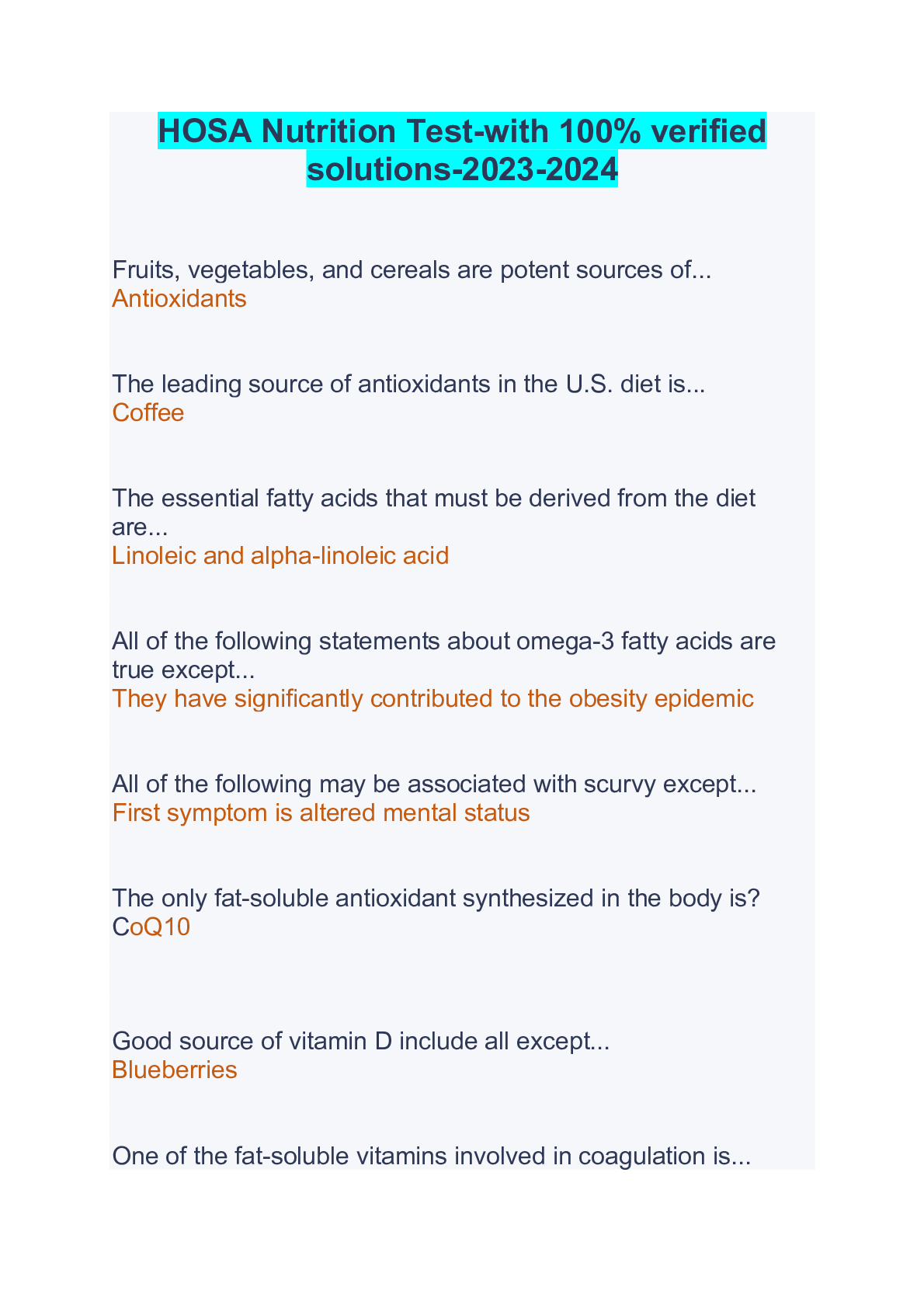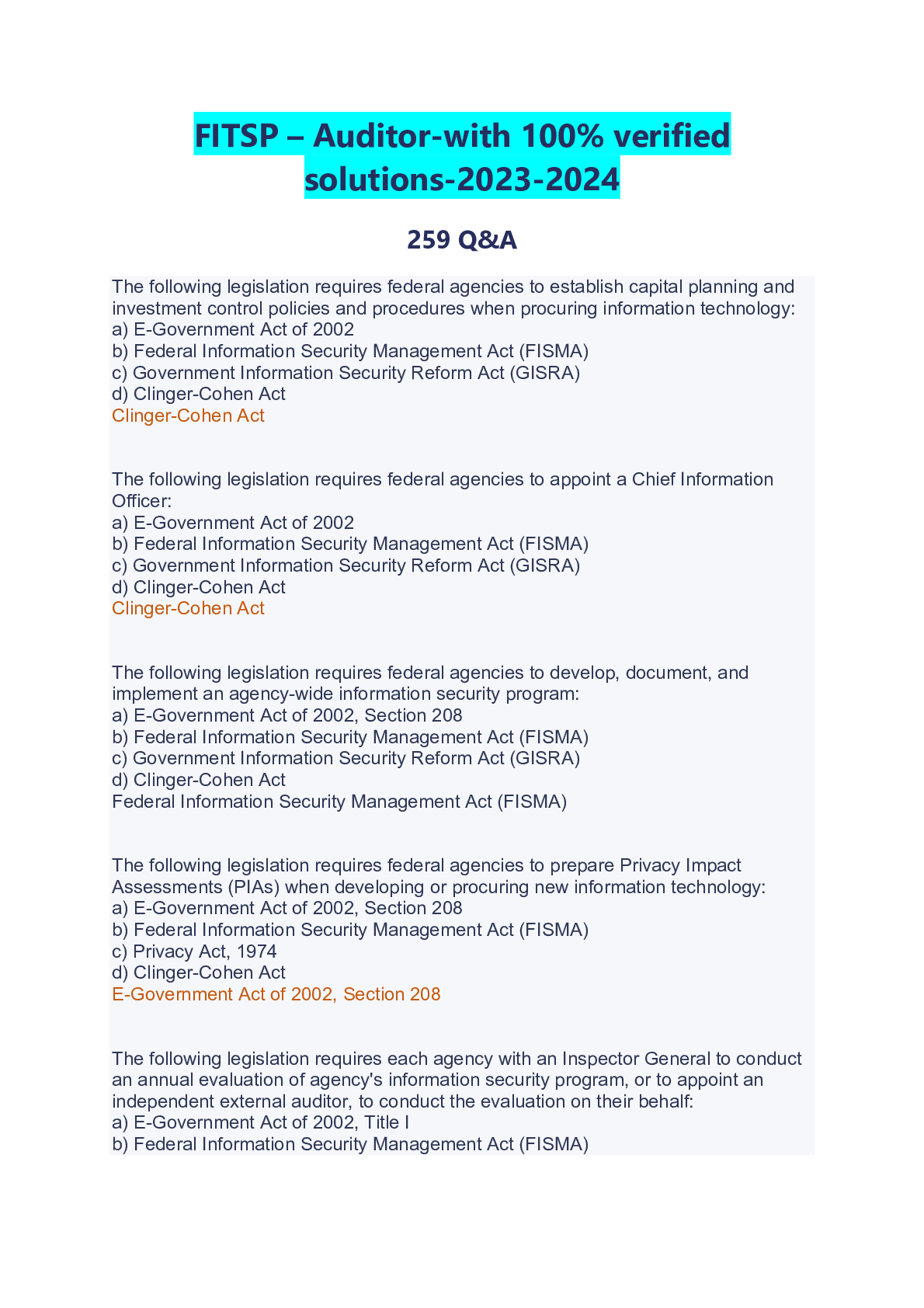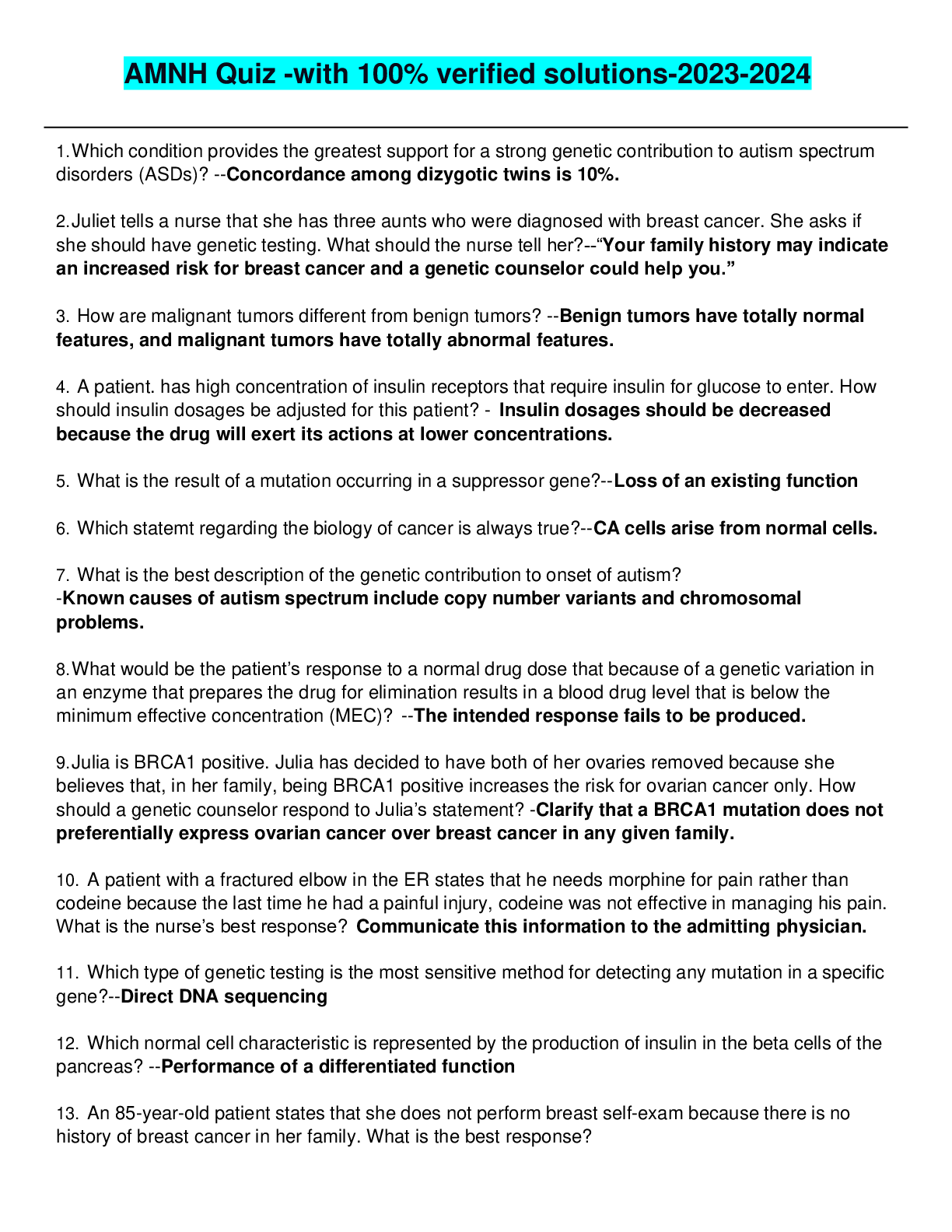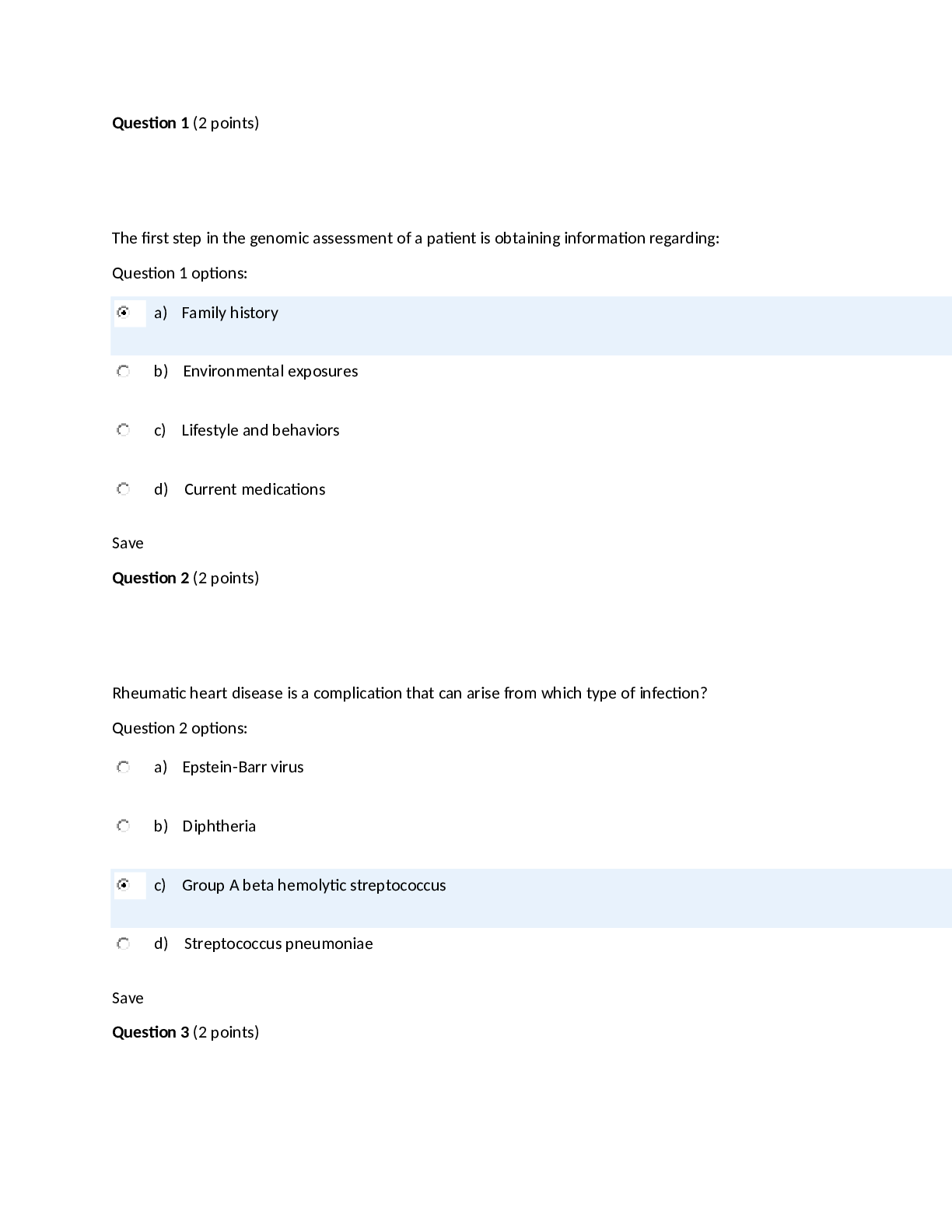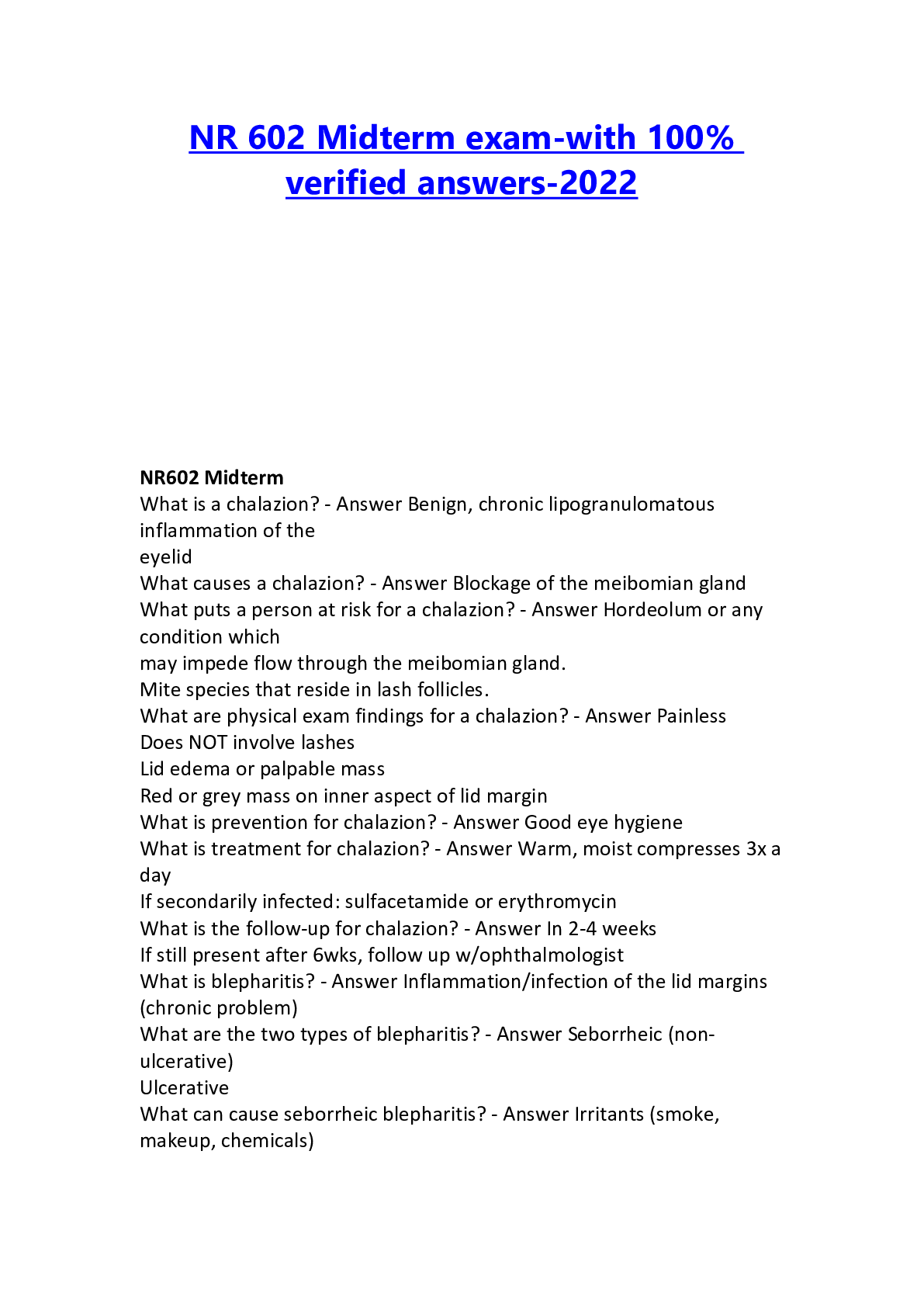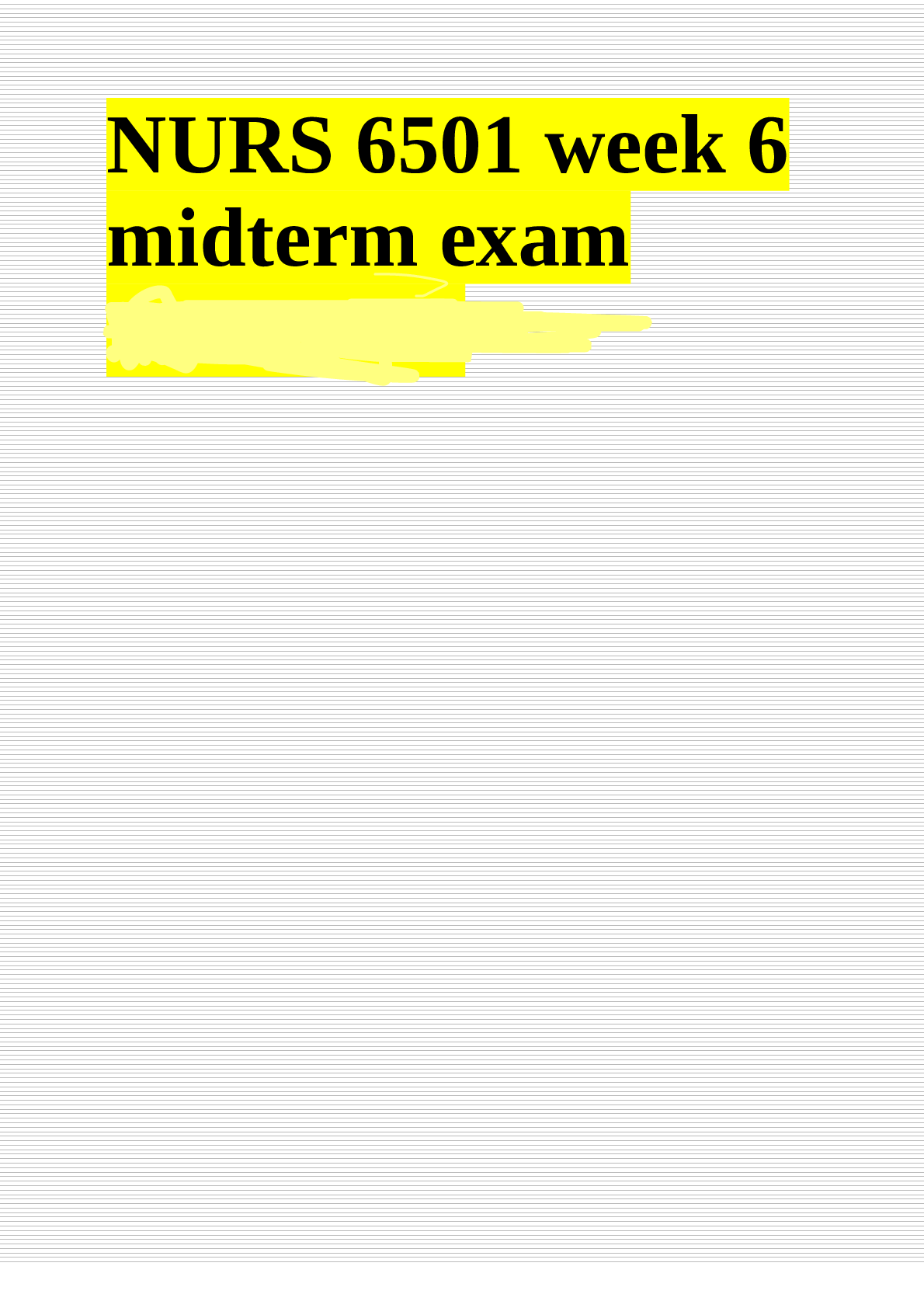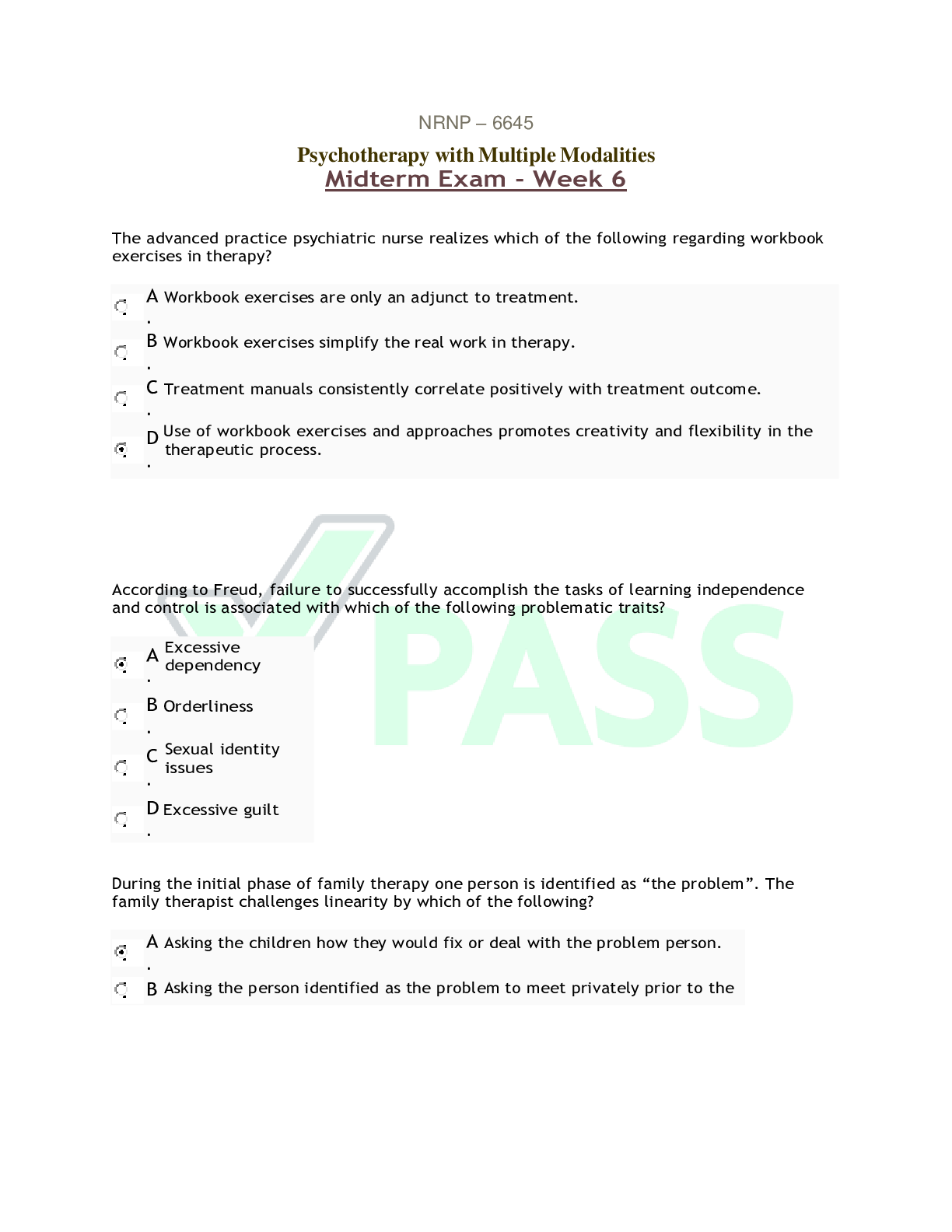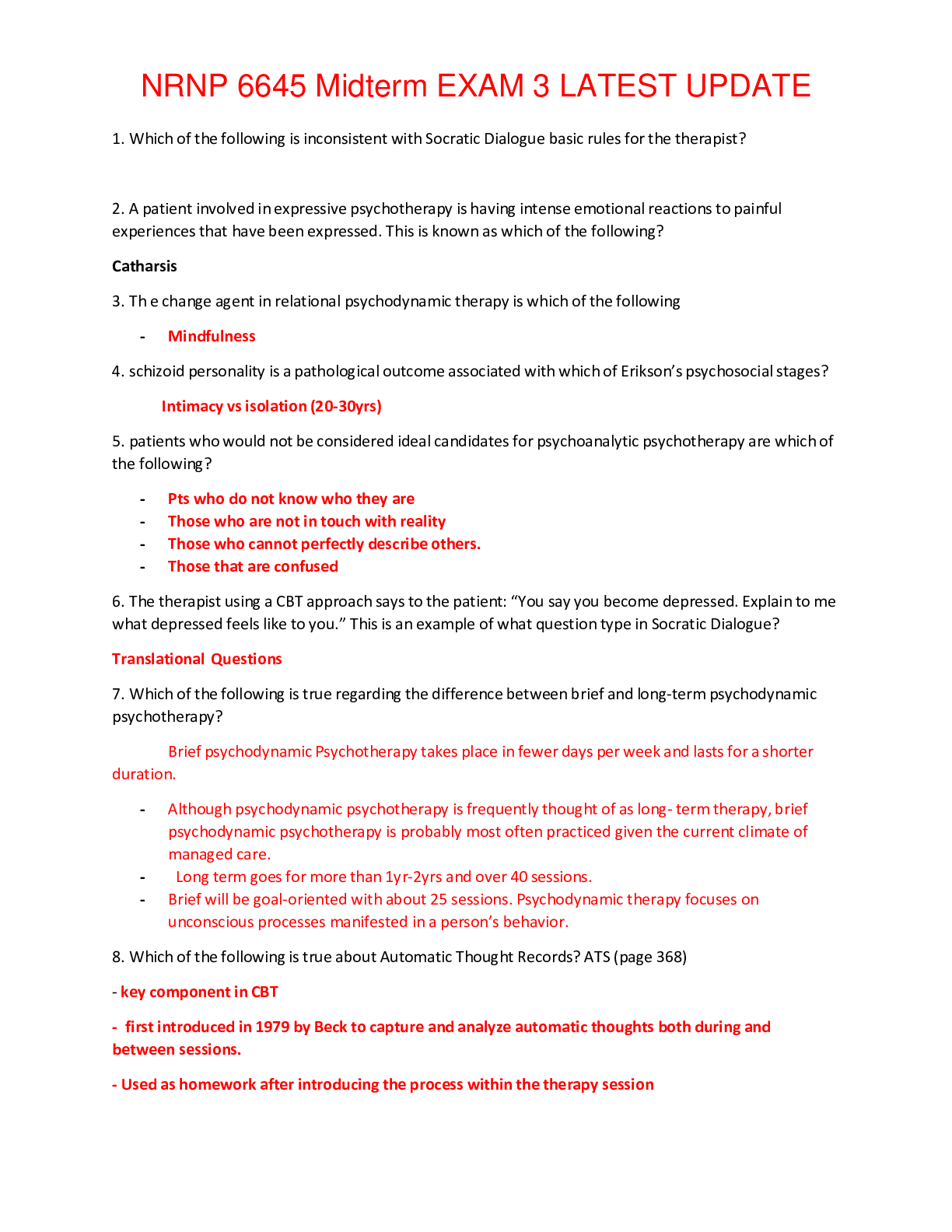NURS 6550-mid term exam-with 100% verified answers-2022
Document Content and Description Below
NURS 6550-mid term exam-with 100% verified answers-2022 User Brandon Olinger Course NURS-6550N-2/NURS-6550F-2-Adv Prac Care in Acute Set I2016 Winter Qtr 11/28-02/19-PT27 Test Week 6 - Exam Star... ted 1/8/17 8:41 AM Submitted 1/8/17 11:10 AM Due Date 1/9/17 1:59 AM Status Completed Attempt Score 50 out of 100 points Time Elapsed 2 hours, 29 minutes out of 2 hours and 30 minutes Results Displayed Feedback • Question 1 The AGACNP is caring for a patient who is quite ill and has developed, among other things, a large right sided pleural effusion. Thoracentesis is sent for pleural fluid 1 out of 1 points analysis. While evaluating the fluid analysis, the AGACNP knows that a fluid identified as a(n) is the least worrisome type. Response Feedback : “A” is the correct answer. A transudate is essentially just water and can occur as a consequence of increased hydrostatic pressure in the pulmonary vessels. It typically implies that the some condition has produced an imbalance in colloid-hydrostatic pressures, such as CHF or hypoalbuminemia. While it can represent a serious problem, it may also represent a transient imbalance. Conversely, “B” is not correct as an exudate has more protein in it and implies a condition characterized by protein leaking from vessels, such as a malignancy or some serious systemic stressor. “C” is not correct—a chyliform effusion is characterized by fat and indicates a pathology causing massive triglyceride degradation. “D” is not correct as a hemorrhagic effusion is blood and typically means traumatic injury. • Question 2 Mrs. Miller is transported to the emergency department by paramedics. She is having profound, unremitting chest pain, is diaphoretic and pale. She has jugular venous distention and a widened pulse pressure. Suspecting ascending aortic aneurysm, the AGACNP order which test to confirm the diagnosis? 0 out of 1 points Response Feedback : “D” is the correct answer. It is the most widely used diagnostic tool as it rapidly and precisely can outline the thoracic and abdominal aorta. “A” is not the correct answer—there are radiographic findings that suggest thoracic aneurysm, but they need confirmation by CT. “B” is not the correct answer as ultrasound is not nearly as precise as a CT scan. “C” is not correct—MRI is only indicated when the patient cannot have a contrast CT. • Question 3 Certain subgroups of the elderly population are at an increased risk for rapid CONTINUED....... [Show More]
Last updated: 1 year ago
Preview 1 out of 36 pages

Reviews( 0 )
Document information
Connected school, study & course
About the document
Uploaded On
Aug 10, 2022
Number of pages
36
Written in
Additional information
This document has been written for:
Uploaded
Aug 10, 2022
Downloads
0
Views
38



